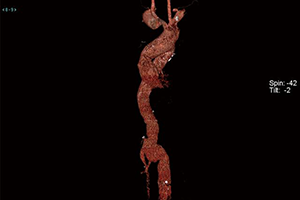Aortic dissection in patients with Marfan syndrome based on the IRAD data
Abstract
Between January 1996 and May 2017, the International Registry on Acute Aortic Dissections has collected information on a total of 6,424 consecutive patients with acute aortic dissection, including 258 individuals with a diagnosis of Marfan syndrome. Patients with Marfan syndrome presented at a significantly younger age compared to patients without Marfan syndrome (38.2±13.2 vs. 63.0±14.0 years; P<0.001) and in general had fewer comorbidities, although they more frequently had a known aortic aneurysm and history of prior cardiac surgery. We noted significantly larger diameters of the aortic annulus and root in the Marfan syndrome cohort, but no larger diameters more distally. The in-hospital mortality in type A dissection was not significantly different in patients with or without Marfan syndrome, despite the differences in age and comorbidities and the lower incidence of aortic rupture in the Marfan syndrome cohort. In contrast, the in-hospital mortality of Marfan syndrome patients with type B dissection appears to be lower than that of patients without Marfan syndrome. The Marfan syndrome cohort that was treated with open surgery for type B dissection seemed to do especially well, with a 0% mortality rate (n=27). Follow-up data for type A and B dissections combined show an estimated five-year survival rate of 80.1% and an estimated reintervention rate of 55.3% in patients with Marfan syndrome. Such a high rate of reinterventions highlights the need for careful surveillance and treatment for patients with Marfan syndrome surviving the acute phase of aortic dissection.
Cover






